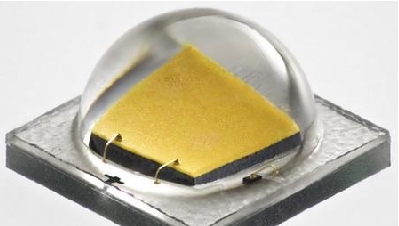 The infrared chip prototype of OSRAM Opto Semiconductors has successfully set a new energy efficiency record of 72%. With an operating current of 1A and a power of 930mW, the light output of this chip is 25% higher than that of a commercially available chip under laboratory conditions, which means that future infrared LEDs can be more energy-efficient. This energy efficiency value is measured at room temperature with DC currents up to 1A. Its wavelength is 850nm, designed specifically for infrared lighting applications.
The infrared chip prototype of OSRAM Opto Semiconductors has successfully set a new energy efficiency record of 72%. With an operating current of 1A and a power of 930mW, the light output of this chip is 25% higher than that of a commercially available chip under laboratory conditions, which means that future infrared LEDs can be more energy-efficient. This energy efficiency value is measured at room temperature with DC currents up to 1A. Its wavelength is 850nm, designed specifically for infrared lighting applications. The experimental results from the R&D lab in Regensburg, Germany, confirmed that this chip has indeed created a new milestone. At an operating current of 100 mA, 72% energy efficiency was achieved using a chip prototype with an infrared thin-film chip technology of only 1 mm2. This energy efficiency is called electro-optical conversion efficiency (WPE) and refers to the ratio between radiated power and power input power.
The chip's external quantum efficiency (EQE), which is the ratio of the number of photons that can be emitted per unit charge per unit action, is as high as 67%, and can be maintained at more than 64% even at 1A operating current.
The prototype 850nm wavelength is ideal for infrared lighting, especially when performing monitoring tasks and working with CCTV cameras. In addition, it is also expected to be used in automotive safety systems, for example, as a light source for pre-crash sensors and night vision systems.
Markus Broll, project developer of IRED chip development at OSRAM Opto Semiconductors' headquarters in Regensburg, Germany, said: "Today, energy efficiency and brightness enhancements can be shifted from 850 nm to other wavelengths. This means that it is possible to create an energy-efficient solution for infrared lighting in the future. "Not only that, there will be fewer components needed for multi-chip applications, that is, saving money and saving energy.
The results of this development work are currently being implemented in phases. The new chip is expected to enter serial production between early next year and mid-year.
Fiber Pen Nib,Passive Capacitive Stylus Pen,Rubber Tip Stylus Pen,Microsoft Stylus Pen
Shenzhen Ruidian Technology CO., Ltd , https://www.wisonens.com